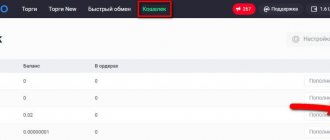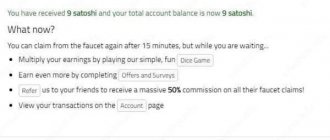Who invented Bitcoin?
On October 31, 2008, information materials were posted on behalf of Satoshi Nakamoto, which described in detail the decentralized currency - Bitcoin. A little later, he posted the first cryptocurrency wallet and launched the network.
The nickname on the site is everything that is thoroughly known about the Bitcoin developer. The activity of the user Satoshi Nakamoto was carried out through a system of proxy servers that allow maintaining the anonymity of the network connection (Tor). All publications were posted in English, and the profile indicated that the user lived in Japan and was 37 years old at the time of posting the materials.
Recently, on the investment website Nakamoto Family Foundation, which is probably related to Satoshi, an excerpt from a future book was published on his behalf. The text said that the choice of pseudonym fell on the name of Satoshi Nakamoto due to its wide distribution, and attached a link to a cryptogram, by solving which users could see the expression “honne and tatamae”, which means the contrast between external manifestations and the true intentions of a person.
What is known about Satoshi Nakamoto
Development of the Bitcoin code began in 2007, leading to the successful launch of the digital currency project in early 2009. The creator demonstrated the blockchain system and released the first wallet. At this time, he actively communicated on specialized forums, answering questions from other programmers. In 2010, control of the Bitcoin.org domain was transferred to co-developers, and the founder ceased public activities.
The name Satoshi Nakamoto (or Satoshi Nakamato) means "wise" in Japanese, so it appears that this person has Japanese roots. It was with this name that the first scientific works on the development of cryptocurrency code were signed. It is clear that he is a talented programmer with knowledge of the C++ language, polite in communication, and fluent in English. On the P2P Foundation forum, he filled out his profile with his age of 37 (in 2009) and his country of Japan.
Why does the founder of Bitcoin hide his identity and does he really exist?
With the growing popularity of cryptocurrency, interest in its creator has also grown, but it is still not possible to find out who exactly is behind the development and placement of materials. There are versions that not one person, but a whole team worked on the development of the project, and new candidates are constantly being nominated for creators.
Gavin Anderson, who helped improve the code after the system launched, communicated with Satoshi Nakamoto remotely for about a year. He assures that evasiveness has always been characteristic of this person. Satoshi ignored all questions related to professional activity, location or age. Their communication was carried out only around the development and writing of code. Anderson himself positions the creator of Bitcoin as a cautious and modest person who gives priority to ideas and professional qualities. Over time, Anderson became his point of contact for a team of enthusiasts from all over the world who were working to improve the functioning of the blockchain.
As practice shows, the fame of the creator of cryptocurrency is neither beneficial nor detrimental to its development. There are many popular altcoins created on the basis of blockchain technology, the names of whose creators are known throughout the world. Accordingly, we can conclude that the reluctance to reveal one’s identity is a personal prejudice of the creator. But of course, in the case of Bitcoin, the anonymity of the author only awakens even greater interest in his creation.
The second version of the reason for not disclosing the real name is the large amount of tokens owned by the creator.
Attempts to identify Satoshi
Over the eight bright years of the existence of the Bitcoin network, several versions have appeared in the crypto community about who Satoshi Nakamoto is. Each time they did not find one hundred percent confirmation.
Version one. Nick Szabo
Many participants in the cryptocurrency community are confident that smart contract developer Nick Szabo is hiding under the name Satoshi.
At the end of 2013, blogger Skye Gray made a statement about the stylometric analysis carried out and the presence of several indirect evidence that the real creator of bitcoin is Nick Szabo, a prominent cryptologist and lawyer. , developer of smart contract technology and the algorithm for the decentralized virtual currency Bit Gold, the publication of which appeared several months before Nakamoto’s article on Bitcoin. The text included a comment about the intention to bring this project to life. However, it was never implemented, but was the immediate predecessor of military-technical cooperation.
Writer and financier Dominic Frisby joined the investigation, who also found a lot of indirect evidence that Szabo is Satoshi:
I studied this issue for a very long time and came to the conclusion that only one person in the world has enough knowledge to create Bitcoin.
Nick Szabo himself categorically rejected this assumption. He even responded to Frisby with a personal letter, which contained the following words:
Thanks for letting me know about it. I'm afraid you're mistaken in thinking I'm Satoshi. But I'm already used to it.
Another reporter and writer, Nathaniel Popper, author of a famous book on cryptocurrency, wrote that all the most convincing facts testify in favor of Nick Szabo, a recluse of Hungarian origin living in the United States. In 2020, the creators of the second most popular cryptocurrency, Ethereum (ETH), named one of the fractional parts of their currency Szabo. Whether this was a tribute to the author of smart contracts widely used in the ETH network, or gratitude to the creator of Bitcoin remained unknown.
Version two. Dorian Nakamoto
In 2014, News Week magazine published a sensational article that their author had gotten to the bottom of the truth about who Satoshi Nakamoto was.
In 2014, a News Week journalist published an article claiming that the creator of Bitcoin was Dorian Nakamoto, a California resident who previously bore the name Satoshi . Nakamoto immediately denied this, saying that he had nothing to do with Bitcoin and that he first heard about digital currencies in general from that same girl reporter. He also explained that he has programming skills, but knows nothing about cryptography and cryptocurrency payment systems.
As the main evidence of Dorian’s identification as Satoshi Nakamoto, the journalist cited a long white streak in his professional activity, coinciding with the time he worked on the Bitcoin network. However, Dorian explained that for a long time he was unable to find a job in his specialty, so he had to work as a laborer without official registration. At the end of the interview, Nakamoto asked the media to respect the privacy of him and his family and not to disturb him in the future.
How much wealth does the creator of Bitcoin own?
Investigations based on studies of the blockchain register, which records information about transactions within the system, indicate that the creator of the cryptocurrency has at least 980 thousand Bitcoin coins, which at the maximum rate was about 19 billion US dollars.
It’s hard to say how much the creator of Bitcoin earned and whether he earned it at all. It is known that the bitcoins belonging to Satoshi never moved and during the entire existence of the network he did not spend a single one. Logically, this is explained by the fact that with such a large capital, Satoshi Nakamoto’s wallet and transactions from it can make significant changes in the exchange rate of the currency and further movement trends. Any transaction he makes can cause sudden unrest and price fluctuations, which will cause irreversible damage to the network. Therefore, Satoshi Nakamoto may become the first of the richest people on the planet who does not have the right to spend a single cent so as not to harm his development.
Interesting Facts
- The smallest portion of Bitcoin that can be sent is called “satoshi”, in honor of the founder. 1 satoshi = 0.00000001 BTC.
- It took Newsweek correspondent Leah Goodman two months of investigation to finally be convinced that Nakamoto was a real person. When Goodman knocked on the door of Nakamoto's house, the elderly Japanese man called the police.
- On LinkedIn you can even find a certain Satoshi Nakamoto, who calls himself the creator of Bitcoin and lives in Japan.
- New Liberty Standard set the rate of 1 dollar for 1,309.03 BTC, that is, for more than a thousand bitcoins they gave only a dollar.
Read more about the dynamics of the Bitcoin exchange rate since its creation in the article
Did you like the material? Share with your friends.
Bitcoin futures: what is it?
Satoshi Nakamoto: creator of Bitcoin
People claiming to be the founders of Bitcoin
A resonant incident occurred in December 2020, when Australian Craig Wright confirmed the research of the sites Gizmodo and Wired, where evidence and a photo of the creator of Bitcoin indicating his identity were first posted, declaring himself one of the team of Bitcoin creators operating under the pseudonym Satoshi Nakamoto. He posted an acknowledgment of the development on his personal blog with a note that he could provide evidence. The news spread with unprecedented speed and appeared on the pages of leading news publications.
But later Gregory Maxwell, a Bitcoin software developer, said that the evidence provided by Wright did not confirm his involvement in the creation of the blockchain. Craig was later charged with fraud. He was accused of illegally taking possession of a million bitcoins, which came to him from his colleague David Kleiman, who died in 2013. Kleiman's brother filed a lawsuit. According to him, the creator of Bitcoin died and it was his brother, and now the rights to the mined coins and the project should belong to his family.
Craig Wright and David Kleiman had email correspondence, analysis of which indicated that both were indeed involved in the creation of the blockchain. It is noteworthy that both defendants are involved in IT technologies. David Kleiman was an expert in the field of computer forensics, and Wright is a PhD in finance and law, an IT security expert, the founder of several technology companies and an ardent connoisseur of Japanese culture. Another interesting fact is that several months before the publication of a description of the blockchain on behalf of Satoshi Nakamoto, a message appeared on Wright’s personal blog that he was soon planning to post detailed information about the cryptocurrency. The next day after the blockchain began functioning, a message appeared there that the beta version of the decentralized blockchain network had already been launched and was currently being tested.
Satoshi Nakamoto - who is he really?
Below are some of the most impressive claims made by the media, in chronological order (and by Bitcoin suspects themselves) about who Satoshi Nakamoto really is. Of course, none of these claims are 100% verified. The only way for the real creator of Bitcoin to prove his identity is to demonstrate access to the wallets containing 980 thousand BTC using a private key.
Michael Clear
Joshua Davis, in his New Yorker article published in October 2011, compiled all the criteria necessary to develop a cryptocurrency. In his opinion, such a person should have deep knowledge of:
- computer science (in particular, the C++ programming language);
- cryptography;
- peer-to-peer (P2P) technologies;
- economy.
Based on his claims, he wrote that Satoshi Nakamoto must be a rare person, if not a group of people, working together. Davis compiled a list of people with the necessary qualifications and chose a young Irish graduate student named Michael Clare. It turned out that this person has been actively studying C++ since the age of 10, is a cryptography enthusiast, is knowledgeable about P2P networks, and worked for some time at Allied Irish Banks.
However, in an interview with Davis, Clair made a very provocative statement that left more questions than answers:
"I'm not Satoshi, but even if I was, I wouldn't tell you."
He later said that he should have chosen his words more carefully, and in 2013 he published a blog post urging people to stop bombarding him with e-mails with questions, but he never openly admitted his innocence or involvement in the creation of Bitcoin.
Nick Szabo
In December 2013, after the slow collapse of the world's first major Bitcoin exchange, MtGOX, began, a new candidate matching the identity of Satoshi Nakamoto appeared on the Internet. It was an American of Hungarian origin, computer researcher and cryptographer Nick Szabo. Two posts on the anonymous blog Like In A Mirror listed reasons why Szabo could be the creator of Bitcoin.
One of the main reasons was the fact that Sabo created Bitcoin’s closest relative, BitGold. The blog author also published several other interesting points to confirm his theory:
- Szabo's calls for help in his personal research related to the development of BitGold ceased after the emergence of Bitcoin;
- The “white book” of Bitcoin, although it was heavily influenced by Szabo, does not contain any facts that during the creation of the first cryptocurrency it was his ideas and developments that were used;
- the time period of Satoshi Nakamoto's messages on the Internet more or less coincides with the time zone in which Sabo lives;
- Computer scientists who conducted a stylometric analysis of the Bitcoin white paper and a number of other works by Szabo concluded that his writing style is very close to that of Satoshi Nakamoto.
Szabo himself actually describes himself as a “pioneer in the field of blockchain, cryptocurrency and smart contracts” on his Twitter page. His blog contains a large number of publications about technology, money and his own experiments with digital currencies. However, he never officially confirmed that he really is Satoshi Nakamoto, although he did not refute it.
Dorian Satoshi Nakamoto
This person is the most famous candidate for the role of the creator of Bitcoin. He was born in Japan, his parents named him Satoshi Nakamoto, but he later legally changed his name to Dorian. He attended college in California, then received a degree in physics and had several jobs, including Citibank. In addition, he worked for the American government for some time. The bulk of his work as a systems engineer is still classified.
In March 2014, Newsweek mentioned him as the inventor of Bitcoin. The publication was based on a statement made during a brief conversation between Dorian and the author of the article, during which he stated that he was “no longer involved” in the Bitcoin project. Of course, this meeting cannot be called a full-fledged interview, since he agreed to answer only one question from the reporter about his involvement in the invention of cryptocurrency. The meeting took place in the presence of a police officer.
This answer would seem to confirm that he is indeed the same Satoshi Nakamoto, except for one small problem. He misunderstood the reporter's question and thought he was talking about the work he did at Citibank. Only five days after the first article was published, Newsweek published a letter sent to the editor by Dorian, who claimed that his answer had a completely different meaning. He began his message with these words:
“I did not create, invent or work with Bitcoin...”
Hal Finney
The next candidate was another well-known programmer who began his training in Atari video game development, but quickly became interested in cryptography when he joined the Cypherpunks email development team. Hal Finney has worked on Pretty Good Privacy since the project's inception in 1991, becoming one of the service's first full-time employees in 1996. He later developed PGP 2.0, one of the first widely used programs, which made it possible to encrypt and authenticate files and encrypt messages. It was based on a method of signing using keys, new for that time, within the framework of a “net of trust.” With this, he helped create the idea of “peer-to-peer” (P2P) even before the technology had a name.
In the field of cryptocurrencies, he became famous after he became the recipient of the first Bitcoin transaction. He received 10 BTC from Satoshi Nakamoto as part of a demonstration of the digital currency's functionality. Finney was also a member of the BitcoinTalk forum, where he posted hundreds of posts on how BTC could be designed better.
In 2009, he was diagnosed with fatal neuromotor disease, also known as Lou Gehrig's disease. He continued to contribute to the development of Bitcoin, ceasing active work only a few months before his death in 2014. In a recent post on the BitcoinTalk forum, he recounted his experience working with Satoshi Nakamoto before his illness took over and left him completely paralyzed:
“When Satoshi announced the launch of his software, I immediately jumped on the bandwagon. I think I was the first person other than Satoshi to get into Bitcoin. I became the creator of block 70 and became the recipient of the first transaction when Satoshi sent me ten coins as a test. Over the next few days I continued to communicate with Satoshi. I basically told him about mistakes and corrected them.”
However, he admitted that he himself never found out who was hiding under the name Satoshi Nakamoto.
After paralysis, his relatives began to receive anonymous threats demanding to pay 1,000 BTC. Otherwise, the extortionists threatened to publish his personal data publicly. Proof that Finney could not be the creator of Bitcoin can be considered the fact that his loved ones were struggling to make ends meet, paying for ever-increasing medical expenses. It is unlikely that the owner of 980,000 BTC would leave his family in such a deplorable financial state.
Craig Steven Wright
The Australian businessman and computer scientist became the fifth candidate on the list of alleged individuals hiding behind the name Satoshi Nakamoto. He first spoke publicly as the inventor of Bitcoin in December 2020 in an interview with Wired and Gizmodo magazines. At that time, he already had extensive experience in the computer field, including information technology, acted as a consultant on security systems and participated in the development of one of the world's first online casinos. He also planned to launch the first-ever Bitcoin-based bank, but the project folded after facing a series of regulatory hurdles.
In his statement, he claimed that he could offer cryptographic proof that he was the creator of Bitcoin because he owned one of Satoshi Nakamoto's private keys. In an interview with the BBC, Wright said he would provide "extraordinary evidence." For a more visual demonstration, he invited blockchain developer Gavin Andreesen to fly to London, where, under his supervision, he successfully signed a message, allegedly using an “alarm key” that only Satoshi Nakamoto could possess.
However, computer security expert Dan Kaminsky traced the signature Wright used to the one Satoshi Nakamoto used in 2009 to first demonstrate how blockchain worked. In his subsequent statement, he noted the presence of discrepancies, the fact of which was later confirmed by other blockchain developers: Mike Hearn, Peter Todd and Jeff Garzik. As a result, Wright's attempt to impersonate Satoshi Nakamoto was called a fraud.
He himself admitted some time later that the rumors surrounding his involvement in the creation of Bitcoin had turned his head, and he decided to take this opportunity to become famous:
“I believed that I could do it...”
Several other famous people who have been cited by the media as the likely creators of Bitcoin include:
- Elon Musk (billionaire and founder of Tesla and SpaceX);
- John Nash (American mathematician and Nobel laureate, whose biography formed the basis of the film “A Beautiful Mind”);
- Wei Dai (cryptographer, creator of the digital currency b-money, who once contacted Satoshi and discussed the development of cryptocurrency with him);
- Shinichi Mochizuki (Japanese mathematician, specialist in number theory and geometry);
- Neil King (software developer on a patent containing the term "computationally impractical to reverse" used by Satoshi Nakamoto; his name was added to the patent 72 hours before the registration of the bitcoin.com domain).
Investigations and their results
The personality of the mysterious Satoshi Nakamoto has always aroused great interest among journalists. During the investigations, a lot of theories were put forward, some even found indirect confirmation that Elon is the creator of the blockchain, but there are only five main theories:
- In March 2014, Dorian Satoshi Nakamoto was named a blockchain developer in the pages of Newsweek magazine. Dorian is a Japanese American with experience as an engineer in defense and financial projects. As part of the investigation, it was discovered that Hal Finney, the recipient of the first transfer using the blockchain system, lived next door to Dorian. Dorian himself did not confirm his participation in the development, and then a new message appeared from the profile of Satoshi Nakamoto, in which he indicated that he was not Dorian and asked to be left alone.
- In 2020, an article appeared in the New York Times indicating that the likely creator of the blockchain is Nick Szabo, a former professor at George Washington University, who at the end of the 20th century began research in the field of decentralized currencies and planned the creation of the Bit Cold cryptocurrency. Nick himself denies his involvement and it is now generally accepted that his works only inspired the creator of Bitcoin.
- Michael Clear is a cryptographer student originally from Ireland. He fell under the suspicion of a New Yorker journalist, who found confirmation of his theory that Michael was a co-author of projects on P2P systems and has English grammar similar to Satoshi. But Michael himself denied his participation in the creation of Bitcoin.
- Linguist Adam Penerberg conducted an extensive study of the posted materials, during which it turned out that one of the phrases can be found on the Internet only 26 times, mainly in copies of the original material, and once in a patent application posted on February 18, 2010. The described technology was based on algorithms similar to blockchain. The patent was filed on August 15, 2008. Its authors were listed as Vladimir Oksman, Neil King and Charles Bry. None of them have confirmed their contribution to the blockchain system.
- The theory has also been repeatedly put forward that the blockchain was developed by a government, a terrorist organization, a large technology company, or another group of individuals in order to establish control over all transactions.
Sergei Mavrodi, who was previously arrested for fraud, stated that he could easily collapse the Bitcoin rate by refusing to use it, for which he also became a candidate for the role of Satoshi Nakamoto. However, this version had a rather mocking direction.
There are many theories around the creator of Bitcoin, but they all lack the most important thing - irrefutable evidence. However, the curtain may open very soon
The first cryptocurrency, Bitcoin, appeared 10 years ago, now there is a multi-billion dollar market, the number of different digital currencies has exceeded 2,100, and the governments of large countries are seriously thinking about controlling the blockchain industry. However, it is still unknown who is behind all this, all we have is the pseudonym Satoshi Nakamoto and a lot of guesses.
The only thing that is known about him is how much cryptocurrency he owns. However, even this is based solely on assumptions. Everyone was sure that Satoshi Nakamoto had almost a million bitcoins, until this data was denied by the BitMEX exchange in the summer of 2020. Its analysts estimate that the mysterious miner who dominated the network in 2009 could have received a maximum of 700 thousand BTC.
The community builds various theories about the identity of the creator of Bitcoin. There are several people who are ideal for this role, but they all lack the most important thing - irrefutable evidence.
False trail
In 2014, Newsweek published an investigation in which the creator of Bitcoin was named 64-year-old Japanese-American Dorian Satoshi Nakamoto (this is his real name). The Los Angeles-based programmer worked on classified defense projects and was also a computer engineer for financial and technology companies.
However, almost immediately after the publication of the investigation, he gave a refutation and stated that he had nothing to do with the development of digital money. Then Forbes editor Andy Greenberg found out that computer scientist and cryptography pioneer Hal Finney lived not far from Dorian Nakamoto. He was the recipient of the first Bitcoin transaction in history.
Greenberg attempted to interview Finney despite the fact that he suffered from a medical condition that left him unable to speak or move. The scientist denied his involvement in the creation of the cryptocurrency, and the facts were not convincing enough.
Linguists joined the global investigation - researchers at Aston University in Birmingham studied the writing style and topics raised by computer science and cryptography scientist Nick Szabo. They largely coincided with the Bitcoin White Paper, so it was Szabo who took the baton as the most likely creator of the first cryptocurrency. This version was confirmed by the fact that in 1998 the scientist wrote about the Bit Gold technology, which was very similar in concept to Bitcoin, but was never implemented in practice.
Analysts took as a sample more than 40 articles from Szabo’s website and, among other things, noticed one pattern - double spaces were often found in Satoshi’s original article on Bitcoin. This may involve using a LaTeX editor to write the original article before converting it to PDF format. There is a similar detail in the scientist’s materials.
Szabo has repeatedly denied any involvement. And the evidence that the programmer really is Satoshi Nakamoto, again, was not enough.
Journalists did not back down; in 2020, the websites Gizmodo and Wired published independent studies, according to which the most likely creator of Bitcoin was now scientist and entrepreneur Craig Wright. He, unlike the previous characters, did not refuse the role and published a detailed confession on his blog.
However, his fame was short-lived - refutations were quickly found on Reddit and Wright was nicknamed “false Satoshi.” Leading Bitcoin core software developer Gregory Maxwell was the first to say that there is no real evidence of a connection between the Australian scientist and the creator of the blockchain. Hacker Dan Kaminsky agreed with him - he called Wright a liar who set everyone off on the wrong trail.
There were a dozen more people who were found by journalists and analysts and given the mysterious name Nakamoto, but in all these cases everything was even less clear. Once this fate befell even the famous inventor, founder of PayPal and SpaceX, Elon Musk, but he immediately abdicated the throne.
Mysterious death
At the end of 2020, Jeff Garzik, one of the first Bitcoin developers who communicated directly with the real Satoshi Nakamoto, made his assumption. According to the programmer, the code for the first cryptocurrency was written by former soldier and detective Dave Kleiman.
In 1995, he was paralyzed in a motorcycle accident, after which he began working in the field of computer forensics. He was considered a talented developer who taught himself a lot, but in 2013 Kleiman died due to an infection.
However, his story did not end there - in February 2020, Ira Kleiman, the programmer’s brother, sued “false Satoshi” Wright and demanded to recover from him 1.1 million BTC, which allegedly belonged to Kleiman.
The information that they both are related to the creation of the first cryptocurrency was disseminated by Wright himself. Cybersecurity specialists at WisSec found that most of the Bitcoin addresses that have anything to do with the scandal never belonged to either party.
In March 2020, Garzik received a subpoena. Now he will have to testify and, if possible, provide any documents that can confirm that Kleiman is related to the creation of Bitcoin. He will also provide the court with information about the mining of the first cryptocurrency from January 1, 2009 to April 2013. Now the court, and not journalists, will try to confirm or refute one of the assumptions about who is hiding under the pseudonym Satoshi Nakamoto.










